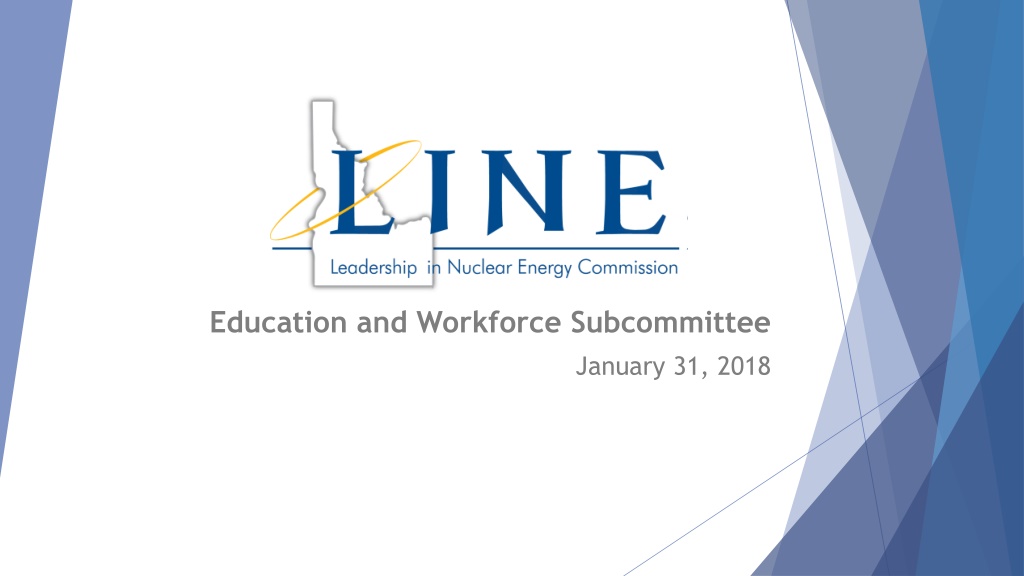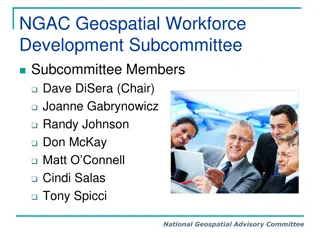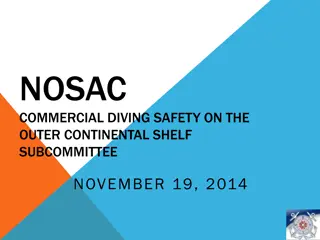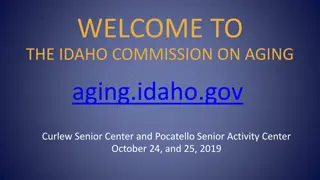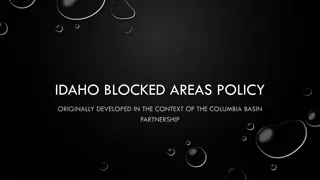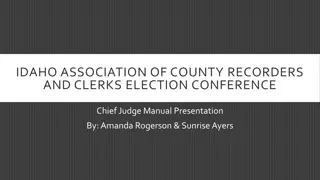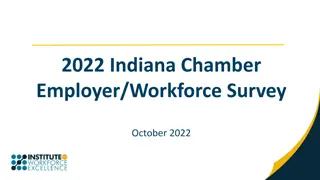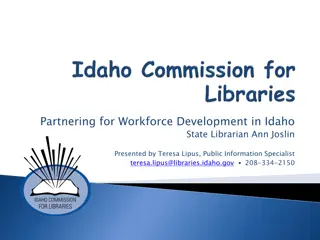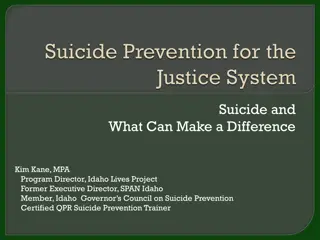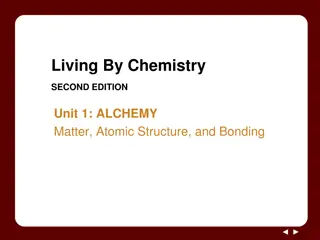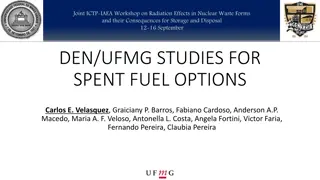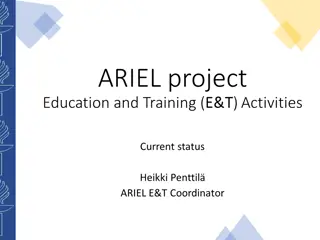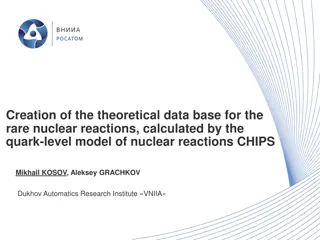Education and Workforce Subcommittee Initiatives for Nuclear Industry Development in Idaho
The Education and Workforce Subcommittee in Idaho is focusing on enhancing education and workforce development in the nuclear industry. They aim to bridge skill and knowledge gaps by providing clear roadmaps for students interested in nuclear careers, engaging with relevant state agencies and industry partners, and targeting recruitment for nuclear-related fields. The subcommittee is aligning efforts to support INL and other entities involved in Idaho's nuclear sector.
Download Presentation

Please find below an Image/Link to download the presentation.
The content on the website is provided AS IS for your information and personal use only. It may not be sold, licensed, or shared on other websites without obtaining consent from the author. Download presentation by click this link. If you encounter any issues during the download, it is possible that the publisher has removed the file from their server.
E N D
Presentation Transcript
Education and Workforce Subcommittee January 31, 2018
Members of Subcommittee Rick Aman, Chair College of Eastern Idaho Amy Lientz, Vice-Chair INL Wendy Horman Idaho Representative Noel Bahktian/Ethan Huffman (alternate) CAES Marc Skinner University of Idaho Lyle Castle - Idaho State University Hope Morrow Department of Labor Bobbie-Jo Meuleman Department of Commerce Dana Kirkham REDI: Science, Technology and Research Org Greg Roach BYUI Don Roth U Wyoming
Charge of Subcommittee: INL and other segments of Idaho industry are engaged in numerous activities that enhance education and workforce development in our State. More needs to be done to couple industry s activities and interests in education and workforce development with the relevant State agencies and private sector. The Subcommittee shall engage INL, Idaho State Board of Education, Department of Commerce, Department of Labor, Idaho universities and colleges as well as businesses and industries. This engagement and partnerships should be: 1) targeted toward nuclear education and related fields, 2) provide a clear roadmap for students interested in these areas of focus, and 3) identify tools for recruitment.
Problem Simply defined There are skill and knowledge gaps in Idaho s nuclear job opportunities now and into the future. This problem will be partially solved with the outline of available jobs and a menu of available programs throughout the state. Engagement of a future workforce should be targeted toward nuclear education and related careers, providing students with clear roadmaps for those interested in these areas of focus, and identifying tools of recruitment for both students and the industry. This focus is not only on INL along with other contractors of the US Department of Energy and nuclear industry currently in Idaho, but could also be made up to support the business related to the supply chain of the future
Occupation Navigation This list combines and formalizes the US federal job classification system (SOC) with the Idaho National Laboratory (WDC) system. Education Requirements Comprehensive Nuclear Occupation List Job Descriptions An essential step toward bridging the gap between job seekers and job openings for Idaho s nuclear industry. Skills Assessment
Nuclear Job Classifications for INL Nuclear Job Classifications for INL Federal Job Classification Category Mapped INL Work Discipline Code Nuclear Engineer (17-2161): Nuclear Engineering (E14), Nuclear Research Facility Engineer (E73) Nuclear Technicians (19-4050): Nuclear Maintenance Technician (T50), Nuclear Safety Engineer (E63), Health Physics (S06) Nuclear Power Reactor Operators (51-8011): Nuclear Reactor Operator (T05) Materials Scientist (19-2032): Material Control & Accountability Team (T51) Machinery Maintenance Workers (49-9043): Nuclear Facility/Plant Maintenance (F07) Electromechanical Engineer Techs, Engineering Tech (17-29): Nuclear Instrumentation/Calibration Technician (T49) Radiologic Technologists (29-2034): Radiological Engineering (X33) Engineer (17-2131): Materials Specialist (U28), Nuclear Material Managment (F49) Product Safety Engineer (17-2111): Nuclear Safety Oversight & Regulatory Assurance (X40) Information Security Analyst (15-1122): Nuclear Cyber Security Specialist (X49) General and Operations Managers (11-1021): Nuclear Facility Planning (F45) Production, Planning, and Expediting Clerks (43-5061): Nuclear Operations Maintenance Expeditor (F46) Environmental Compliance Inspectors (13-1041): Regulatory Compliance, Environmental (X42) Administrative Service Managers (11-3011): Nuclear Facility/Plant Scheduler (F43), Nuclear Facility Training (P56), Nuclear Facility Operator (T44), Other Facility Services (F21*)
Institutions with Nuclear Related Degrees Boise State University Idaho State University 10 Bachelor 6 Associate 15 Masters 8 Bachelor 6 Doctorate 6 Masters Brigham Young University Idaho 2 Doctorate University of Idaho 8 Certificate 5 Associate 8 Associate 15 Bachelor 1 Bachelor College of Eastern Idaho 19 Masters 8 Doctorate 4 Certificate 7 Associate
Workforce Training Centers The mission of Idaho s six Workforce Training Centers is to provide short term, industry focused training, and to bring business sectors together to address common workforce training needs; focusing on the specific skill needs of their respective regions. Specific to the nuclear energy sector, training programs include: Energy Systems Technology, Environmental Safety & Health, Radiation Safety, as well as numerous support programs for trades, project management, leadership, apprenticeships, etc. Energy Systems Technology and Education Center (ISU School of Technology) College Eastern Idaho College Western Idaho College Southern Idaho North Idaho College Lewis Clark State College
Inventory of Partners The committee went through a list of possible partners to assist with the subcommittee, adding as necessary. The current list includes: Idaho Organizations: Idaho State Energy Alliance, ITC, IGEM, IBE CAES, UI, ISU, BSU, BYUI, Idaho Community College Coalition (ICCC), Idaho Nuclear Companies: INL, Idaho Cleanup Project, Navy, UAMPs, Studsvik, Curtis Wright, Premier, NuScale, Other Subcontractors K-12, STEM Action Center, Idaho CTE and PTECH, Shoshone Bannock Tribe Veteran Organizations Economic Development Organizations: REDI/STAR, TRIDEC, SBOE, Chamber Alliance National Energy Institute American Nuclear Society Idaho Energy Alliance, Idaho Commerce, Idaho Department of Labor Unions
Four Areas of Higher Education Influence for the Nuclear Training Sector: Degree Production and Re-training New or existing employees for INL and contractors -Focus on changes in technology, areas in demand and professional development with degrees and certifications -Creation of new degrees, delivery modalities, and seamless handoff between institutions T-2-4 (Technical certificates, 2-year associate degrees, 4 year bachelors) Programming which creates a detailed pathway for students to go directly from a technical certificate, into a two-year degree, and finish with a four-year degree. -Emphasis on population of Some College - No Degree, Veterans, Incumbent worker training -Emphasize on 1:2:7 ratio of- engineers/scientists: bachelor s level support: technicians -Credit for prior learning, competency base learning Badging, Skill Stack Retain Lessen outflow of millennial workforce from region -Reduce millennials who are relocating out of the area for jobs or education opportunities -Preparation for Silver Tsunami Boomers retiring -Emphasis on K-Career continuum, attractive educational system for Idaho Attract Trained labor force into region -Assess local needs by enhancing partnerships with business and industry -Build Roadmap of available degrees, programs, internships and connections to industry and a career -Closely work with economic development organizations for trends Influence - Future workforce -Inspire K-12 students with STEM and high tech career exploration
Path Forward Objective Map the education system tied to the nuclear industry that allows for efficient and rapid changes to evolving technologies and skills. Use these tools to retain, attract and inspire the needed talent Next Steps Plan (INL and other related industries) 1. Implement the Priorities (expand existing programs and starting new) 2. Test and Validate findings Collect and Measure Data 3. Adjust, Grow Programs and Attract new Employees (industry and students) 4. Deliverables by Dec 2018 Listing of Degrees and Programs that exist Inventory: Knowledge, Skills, and Abilities derived from industry and needed for current workforce List of Nuclear-Focused Careers Short term and Long Term needs (numbers and skills) collected by industry Create a Communication Plan and Define Audiences: Parents/Family, Students, Counselors/Teachers, Industry and Economic Development Organization, Faculty/Career Advisors Tools and Products: Roadmap, Fact Sheets, Video, Workshops, etc.
